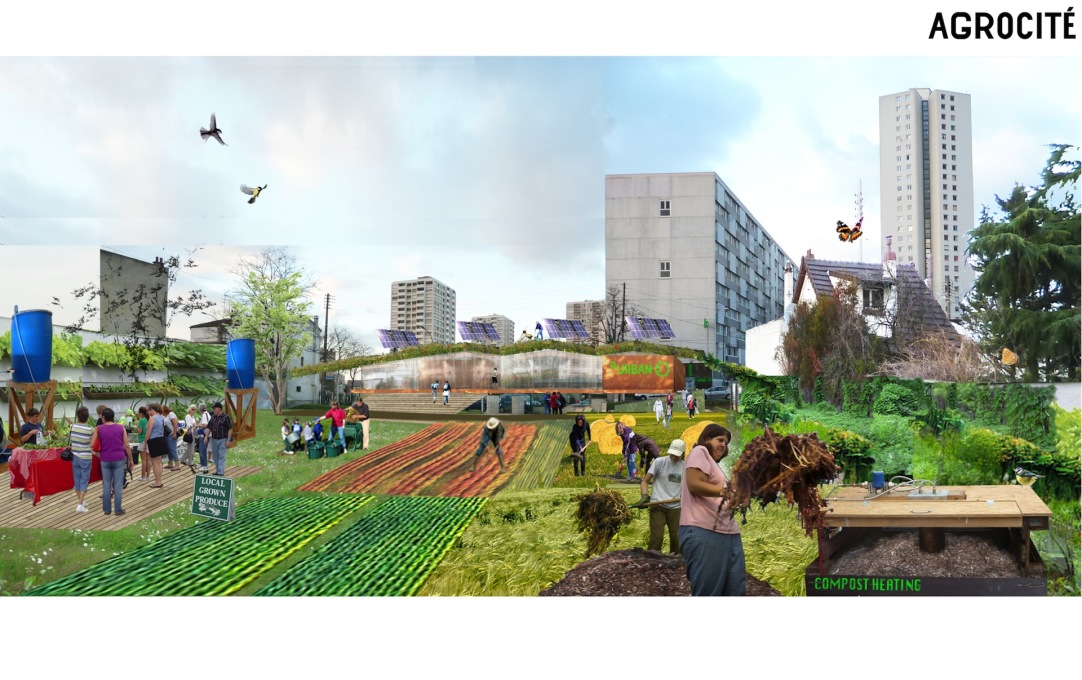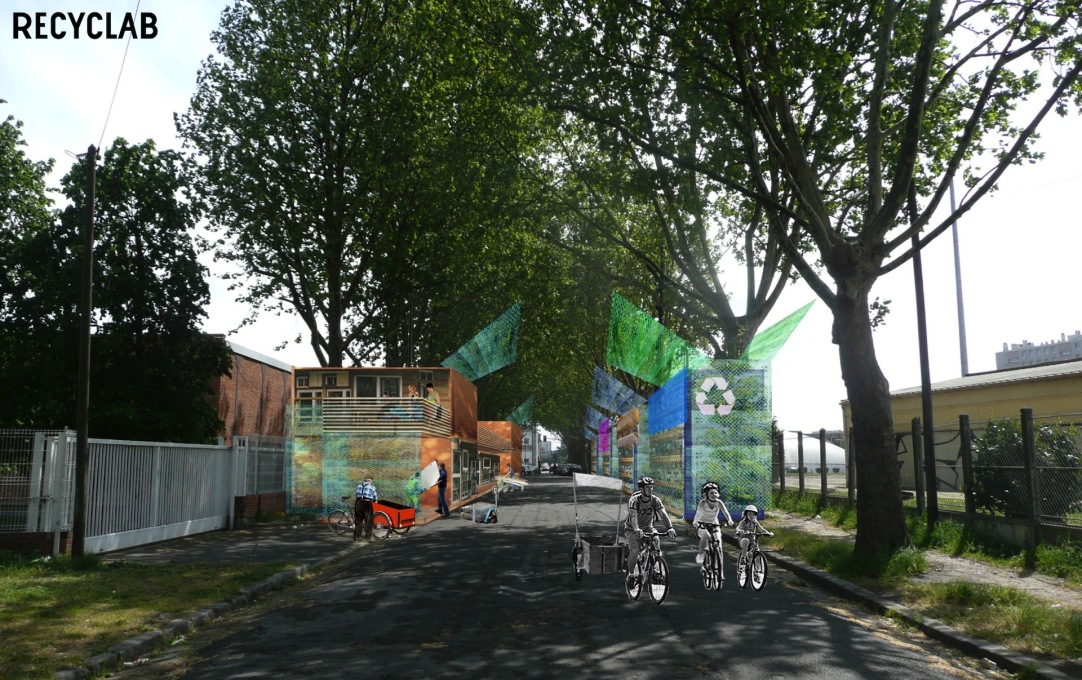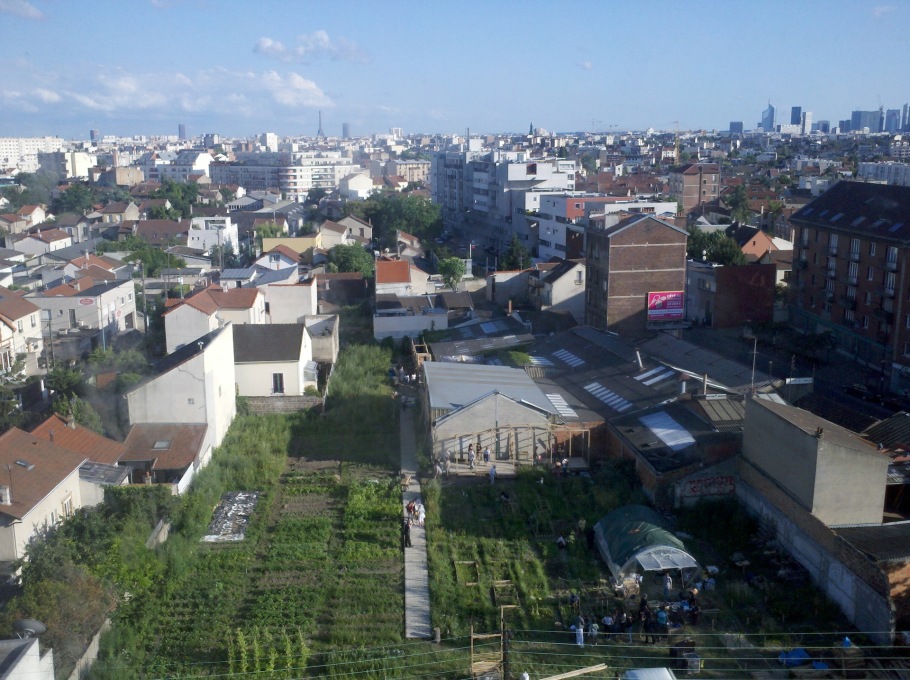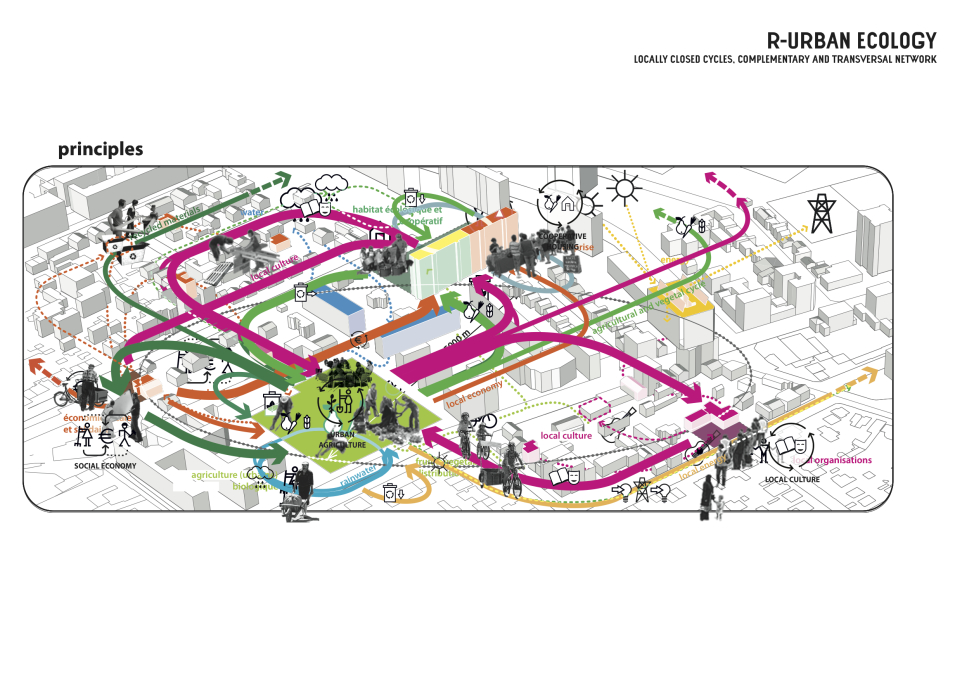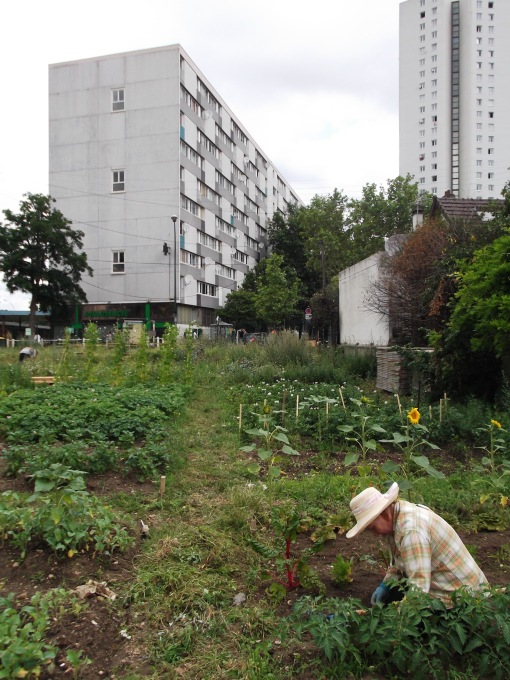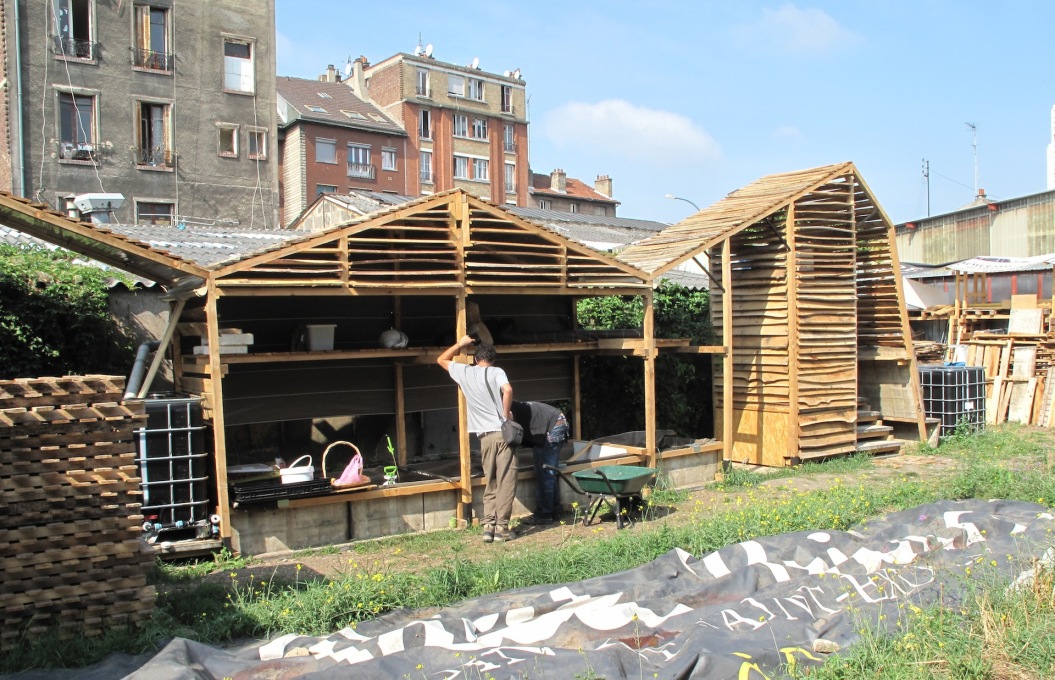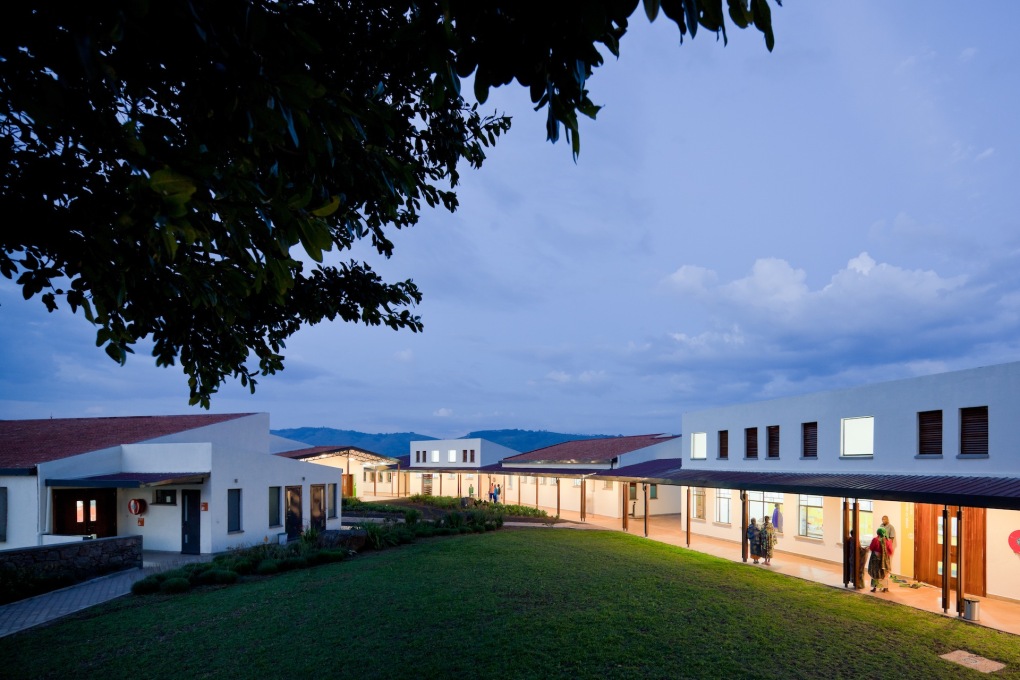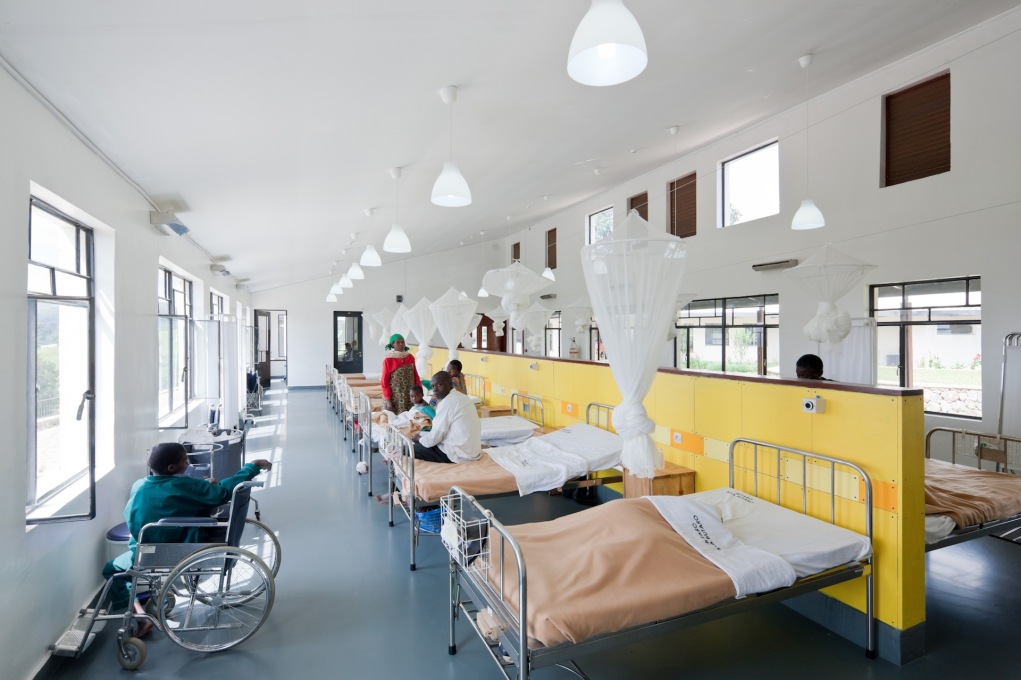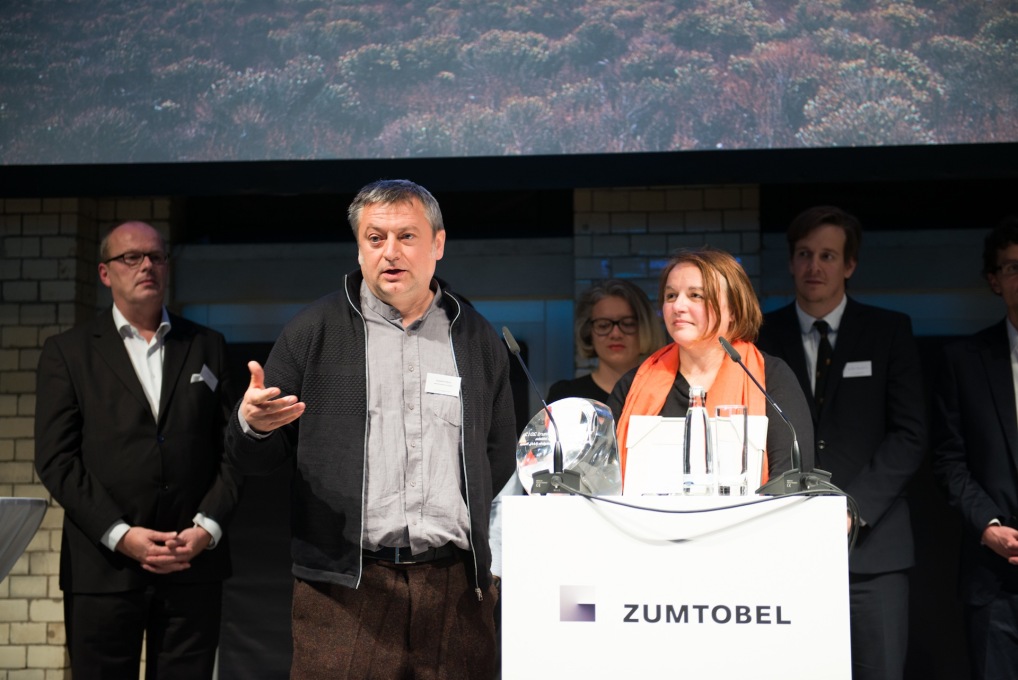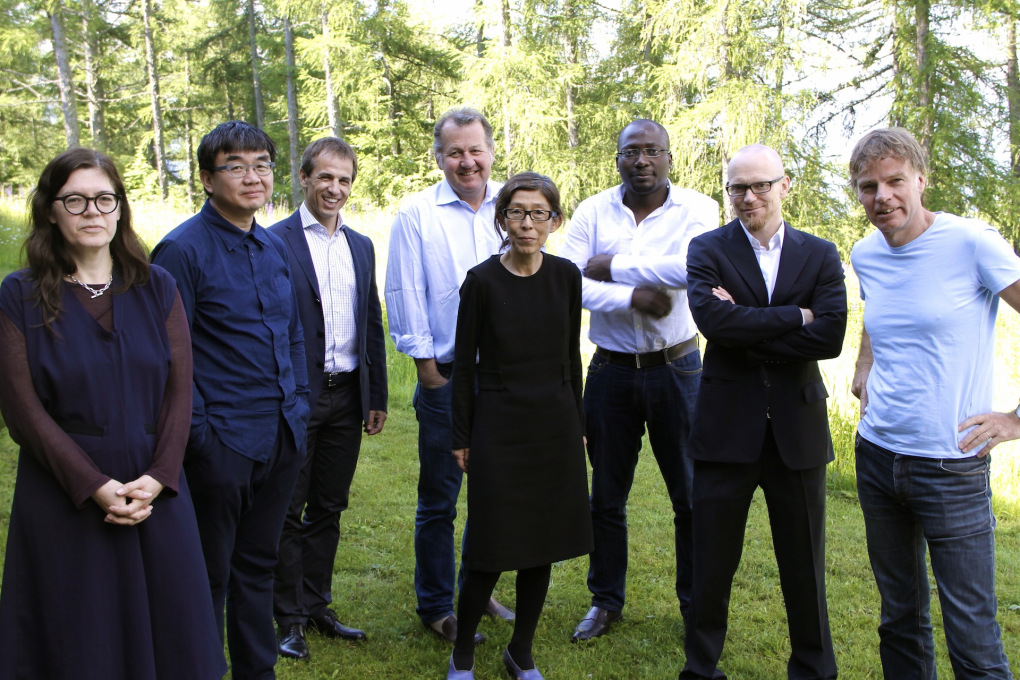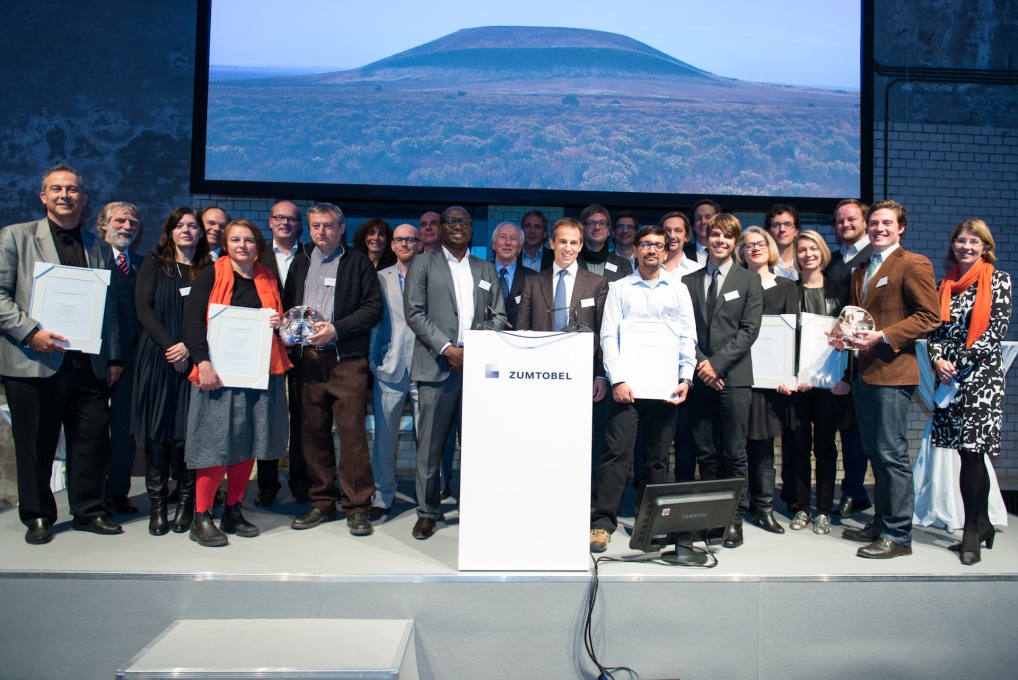On Friday, November 16 in a refurbished factory building in Berlin, the Zumtobel Group Awards for sustainable architecture were officially awarded to this year’s winners. The award, which carries a hefty monetary prize, promotes and recognizes practices actively engaging social and economic development issues. This year’s selection was remarkably diverse, and the winning projects were noticeably focused not only on sustainable building practice but on social interventions through the active construction of human relationships. The prizes were awarded in two categories: for “Built Environment,” MASS Design Group’s Butaro Hospital in Rwanda won the grand prize of 80,000 euros, and in “Research and Initiative,” Atelier Architecture Autogérée’s R-URBAN project split the 60,000-euro award with four runners up, receiving 30,000 to further their goals.
A few minutes before they stepped on stage to accept their award, uncube found a moment to speak with the architects of the winning project in the “Research and Initiative” category, Doina Petrescu and Constantin Petcou of the Paris-based, global network Atelier Architecture Autogérée (AAA). Their incredibly ambitious project is a plan to re-generate the Paris suburb of Colombes through ecological and social intervention, a model that they believe can be mapped in different formulations around the globe. The enthusiasm for the project both from the jury and the buzzing audience was tangible – and in our interview it’s clear what the excitement is about.
How did R-URBAN begin?
Petcou:
Between May and August 2008 we conducted research to learn about strategies to affect ecological, economic, and social change both on a local and global scale. Our first goal was to act in an existing city, not to find an empty space to start anew –starting from a blank slate with no existing social fabric is not that interesting to us. We find it more interesting to work in an interstitial location and introduce ecological practices over time. Secondly, we aim to create a bottom-up dynamic: introducing collective practices in everyday life to create local effects that can be translated to a larger scale.
What is specific about the town of Colombes in Paris’s Northwestern suburbs and why did you choose this area as a site for R-URBAN?
Petrescu:
Colombes is a suburban town near Paris with a population of 80,000. In terms of urban fabric, it’s a mix of individual housing, urban sprawl, and social housing blocks all with diverse inhabitants. Colombes has a high rate of unemployment, but a vibrant culture of civic activity – there are 450 non-profit organizations in the area, which shows how proactive the citizens are and also that they have free time to contribute.
When we contacted the municipality of Colombes with our strategy, it was met with great interest. The municipality became our partners rather than clients – as did other local organizations. We are in the process of setting up three pilot units that will establish a unit of collectively-run facilities. These units are called AgroCité, RecycLab, and EcoHab – the first focusing on urban agriculture and pedagogy, the second on recycling, eco-construction, and social economy, and the last one is cooperative housing. These structures are models for practices that can disseminate further.
It’s a completely different model for an alternate bureaucracy.
Petrescu:
Yes, it’s a new form of institution that is civically run. Say, a municipality or public institution plays a different role, more of an enabler than a top-down beneficiary. We will create jobs, and these will be places for learning, for people to learn how to do things themselves. They will use these places as resources. We are creating ecological cycles that involve local businesses too.
So this is as much a work of social architecture as a physical one?
Petrescu:
Yes, but architecture remains at the core, because by building these three physical units we can not only provide resources and hubs for communication, but also showcase what we are doing on a broader scale. Architecture is not only buildings – it’s building agencies, connections, circuits, and processes.
Petcou:
With R-URBAN we are trying to realize the possibility of living more collectively and ecologically. In a very simplistic way, with these three pilot projects we imagine cutting each day into three parts. You work 8 hours, you have free time for 8 hours, and you are at home for 8 hours – so R-URBAN provides places for social time, pedagogy, agriculture, and housing . But these three physical units in Colombes are just one pilot model — there could be other ones, like commercial areas, ethical areas, other economic activities or food production. Distinct yet networked spaces allow people places to organize their lives in the way they want.
Altering the way we construct daily life around sustainability ultimately addresses not only urban ecology but the way we use time – changing everything down to our internal biology.
Petrescu:
Yes, and it’s a statement about how to intervene in an existing context, how to regenerate a place anew in a way that allows for greater freedom in everyday life.




